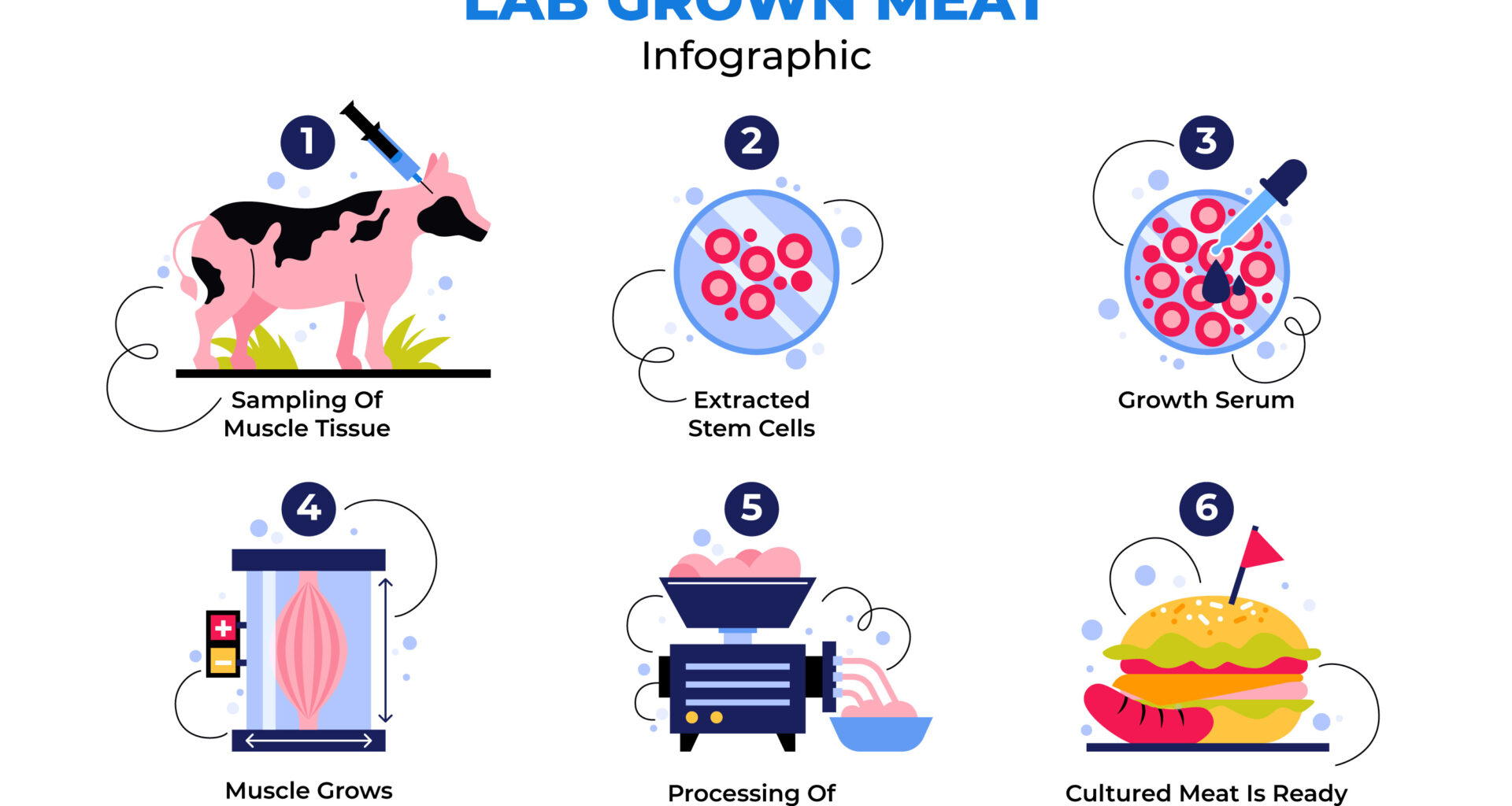In a world grappling with the environmental consequences of traditional livestock farming and ethical concerns surrounding animal welfare, the concept of lab-grown meat, also known as cultured meat or cultivated meat, is emerging as a beacon of hope. This innovative technology involves producing meat directly from animal cells, bypassing the need for raising and slaughtering animals.
The Science Behind It
The process begins by obtaining a small sample of cells from an animal, typically muscle or stem cells. These cells are then placed in a bioreactor, a controlled environment that provides the necessary nutrients and growth factors. Over time, the cells multiply and differentiate, forming muscle tissue that resembles conventional meat.
Benefits Galore
Lab-grown meat offers a multitude of potential benefits.
- Environmental Sustainability: By eliminating the need for large-scale livestock farming, it could significantly reduce greenhouse gas emissions, land use, and water consumption.
- Animal Welfare: It offers a way to produce meat without the need for animal slaughter, addressing ethical concerns about animal suffering.
- Food Safety: The controlled environment of a bioreactor reduces the risk of contamination and foodborne illnesses.
- Nutritional Control: The nutritional content of lab-grown meat can be tailored to meet specific dietary needs or preferences.
Challenges and the Road Ahead
While the potential of lab-grown meat is immense, there are still challenges to overcome before it becomes widely available.
- Cost: Currently, the production cost is high, but it’s expected to decrease as the technology matures and economies of scale come into play.
- Scaling Up: Producing lab-grown meat at a scale that can meet global demand requires further technological advancements.
- Consumer Acceptance: Convincing consumers to embrace this new form of meat will involve addressing concerns about its safety, taste, and “naturalness.”
- Regulatory Framework: Establishing clear regulations for the production and labeling of lab-grown meat is essential.
The Taste Test
Early taste tests suggest that lab-grown meat closely resembles conventional meat in terms of texture and flavor. However, further refinement is needed to achieve a perfect match.
Looking to the Future
Lab-grown meat holds the promise of revolutionizing the food industry and addressing some of the most pressing challenges facing our planet. While it’s not a silver bullet solution, it represents a significant step towards a more sustainable and ethical food system. As technology continues to advance and consumer acceptance grows, we can expect lab-grown meat to play an increasingly important role in our diets in the years to come.
In Conclusion
Lab-grown meat is not just a futuristic concept; it’s a tangible reality with the potential to reshape our relationship with food. By embracing this innovation, we can pave the way for a future where delicious, nutritious, and sustainable meat is accessible to all.











